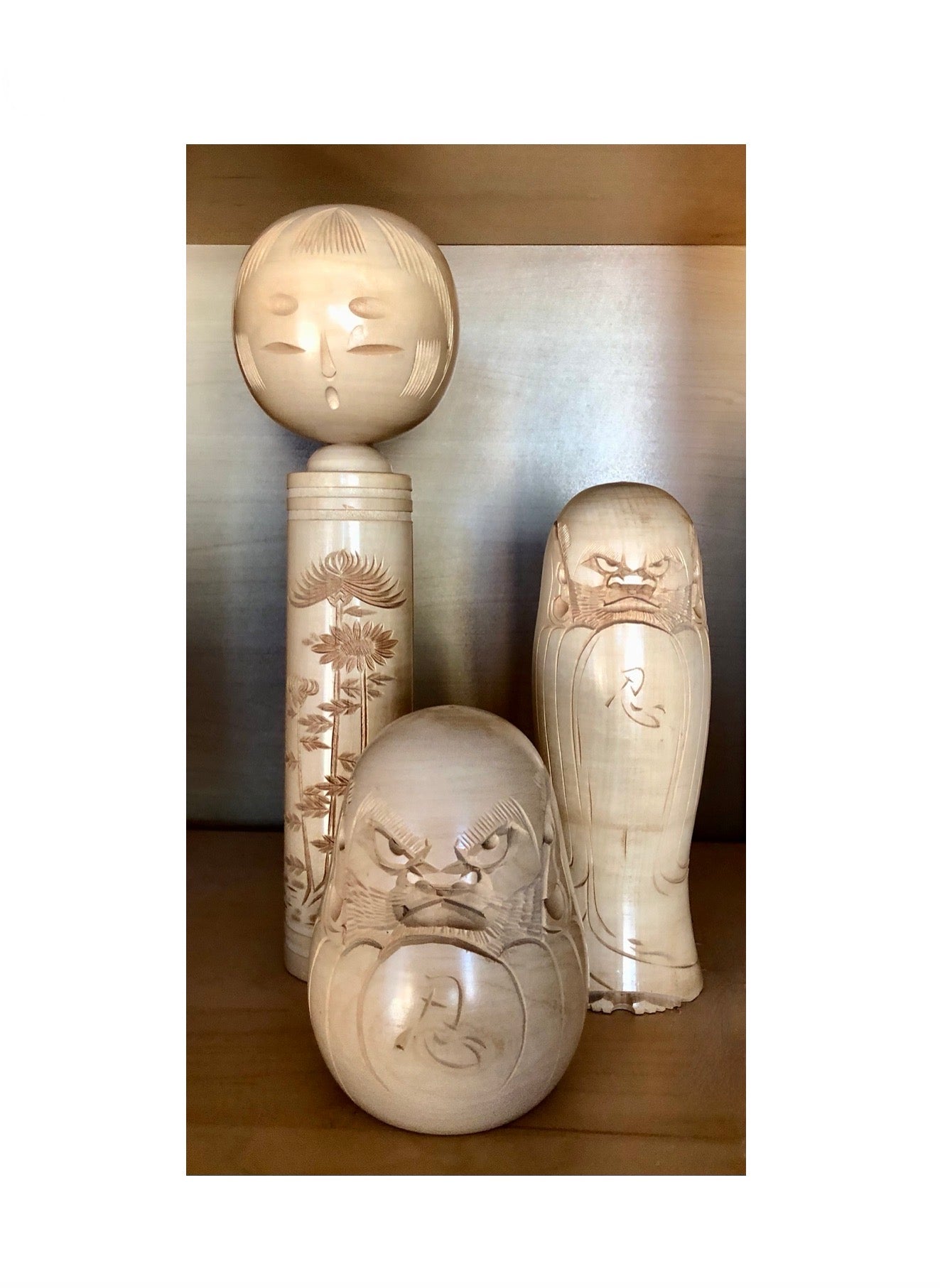
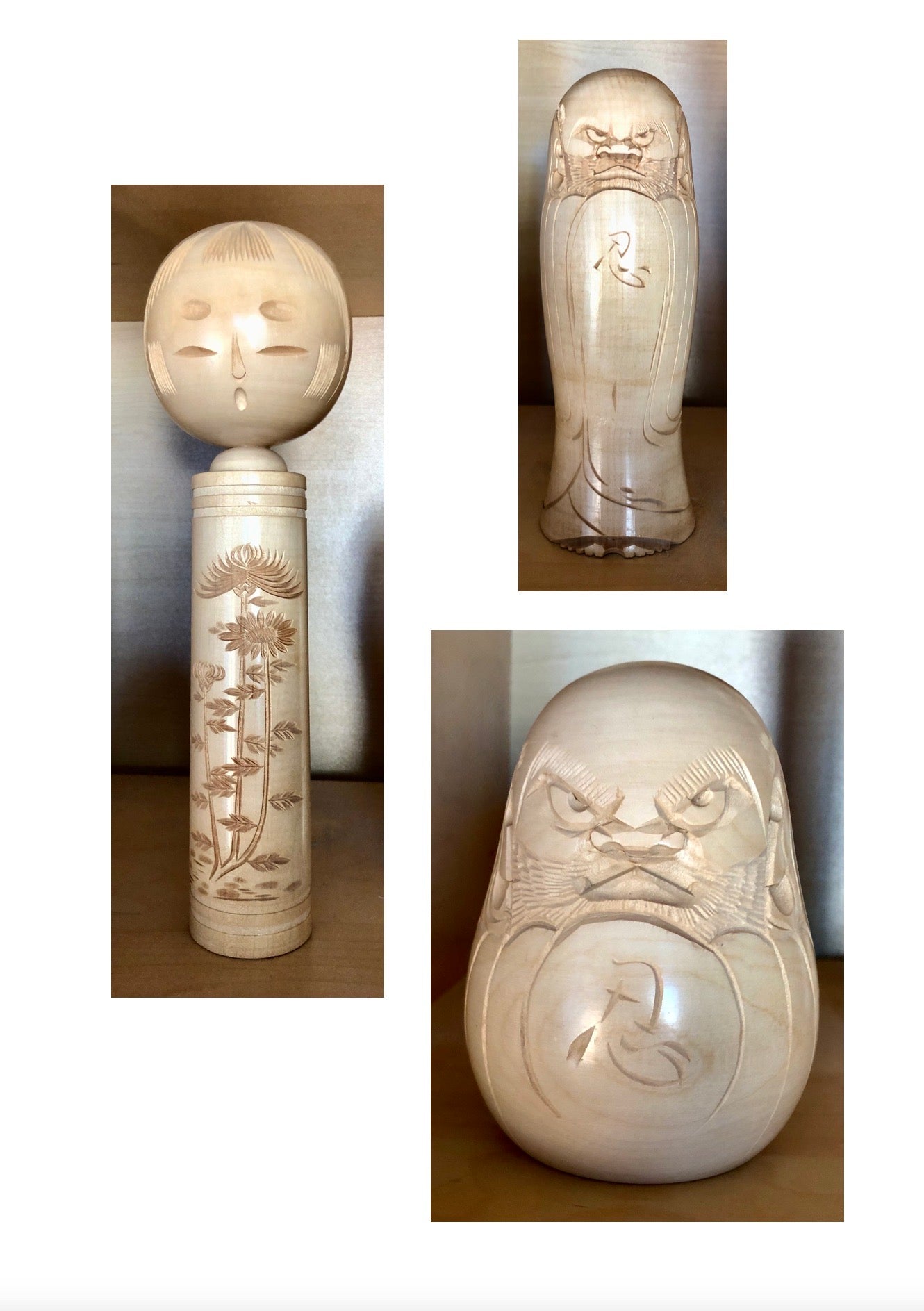
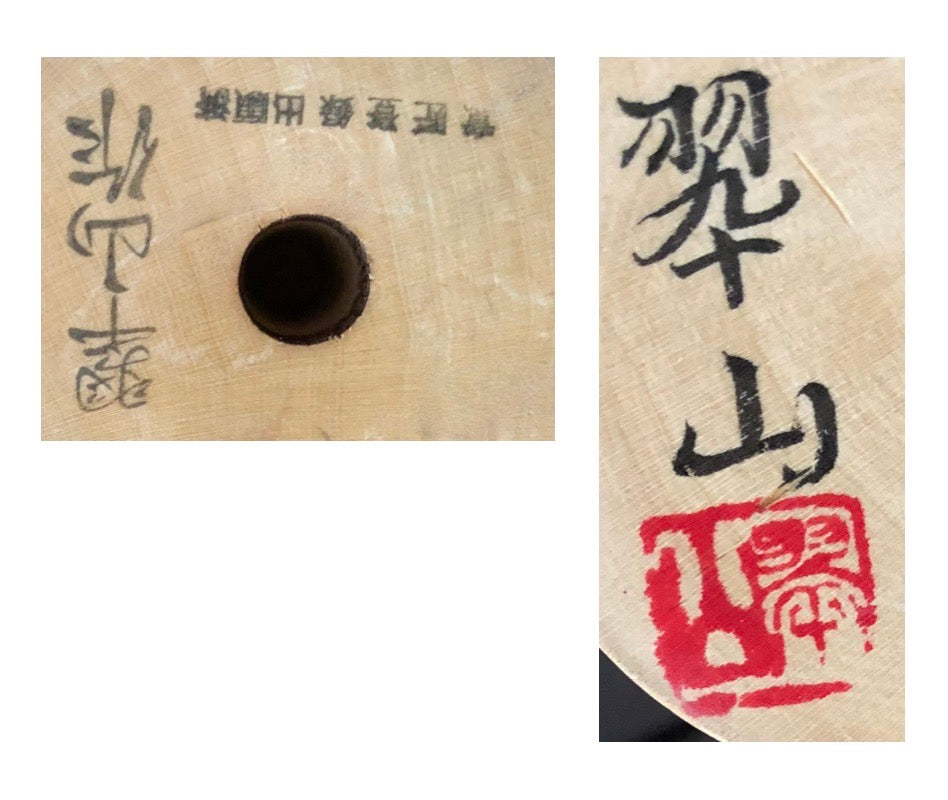
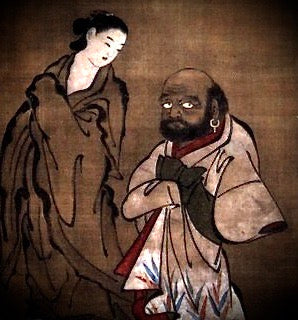
Vintage Japanese Sosaku Carvings of “Folk Deities” by Suizan, Shinobu (Yokusan, Shizan)
Dimensions: 13-0”h; 7-3/4”h; 5-0”h
Each of these kokeshi, because of their rarity, is being sold as a set and represents Noh theatre images and Buddhist detailed interpretations on turned and carved wood called, ‘Harusame-bori. Each has distinctly different faces, expressions, positioning, and body motifs giving a textural contrast to the natural Kabanoki, (birch) wood. There are only three artists making this type of doll and none of them paint their dolls.
The standing figure on the left is depicting Hime-daruma and represents the legendary Empress Consort Jingu, the consort to Emperor Chuai, who led Japan between 201 and 269. She has a unique facial expression with her mouth open and is said to be singing a ‘song of celebration’ (which is the title of this doll). She has two auspicious marks called an ‘Urna’, which is a spiral or circular dots placed on the forehead of Buddhist women. On her body are beautifully carved chrysanthemums, (symbolizing royalty, longevity, and rejuvenation) often used as a floral offering which is known as the "Buddhist Flower". The other two are interpretations of Daruma (Bodhidharma), one standing and one cross-legged and meditating wearing the typical flowing robe giving life to each doll. Both are carved on the upper portion of the robe with the inscription “Nintia”, (endurance or patience). After the turning and carving the birch wood figures were finished with a type of natural candle wax,(Rosoku no ro). Each piece is signed in script on the bottom, and has ownership stamps, in one case his red impressed Hanko.
Suizan-san is a unique artist whose work is unusual and seldom seen, making these dolls quite rare for he made a limited number and specifically for members of his Zen Buddhist Temple for special occasions. Since his goal was not to have attention, no other information is recorded about this artist. For a more complete perspective on this artist visit:https://mingeiarts.com/collections/artisan-woodworker-suizan-shinobu-yokusan-shizan.
Condition: Excellent condition meaning commensurate with age showing everyday wear and void of cracks, breakage, or repairs, and still retains their distinctive character. Meets the high standards of the collector of the works of Sosaku Kokeshi by the masters.
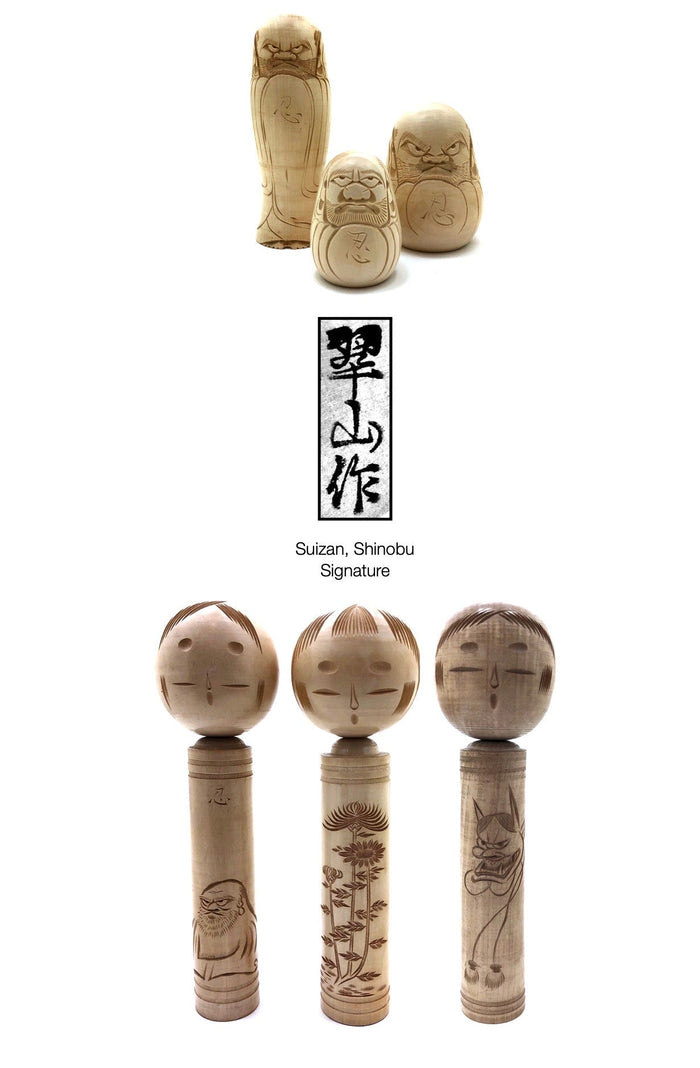
Artisan
Woodworker: Suizan, Shinobu (Yokusan, Shizan)
Biographical History:
Creative Kokeshi Transitional artist Suizan is known to be from the Tohoku region, but there is no other information found on this artist. Some of his Kokeshi are similar to the Traditional Tougatta-style dolls. His style of carving is called Harusame-bori. As collectors, we felt it was most important to represent all Sosaku Kokeshi artists, whether or not each artist has a written account of his/her life. We show the diversity of cultural values and the creative work produced by a multitude of artists.
In researching old writings through articles and books that remain, it is evident that the Kokeshi Craftsperson not only created beautiful forms as toys, but also kept alive cultural values, customs, and fashion through the extensive representations of Kokeshi dolls. The beauty is in the doll and not the signatures, for most masters never signed their dolls. Later they named the dolls, but only when Westerners insisted on signatures because they did not know the artists, so the carvers began to sign their works, for the carvers wanted to promote sales to make a living, during the seasons that did not provide an environment to continue their otherwise daily work.
Collector's note – descriptive qualities, standard characteristics & ornamentation styles:
Separating the subject from the background gives solidity and definition, which supports the carving on his lathe-turned dolls. Suizan works only in Kabanoki, (Birch) or Mizuki, (Dogwood), and never paints any of his dolls. Images range from Noh theatre images, Daruma, (folk diety), the devil, chrysanthemum, and autumn flowers. He often carves the kanji for ‘Patience” into his pieces. He is a unique artist whose work is unusual and seldom seen, and is one of only three artists who do not paint their dolls.
Explore & Learn More about Woodworker: Suizan, Shinobu (Yokusan, Shizan)